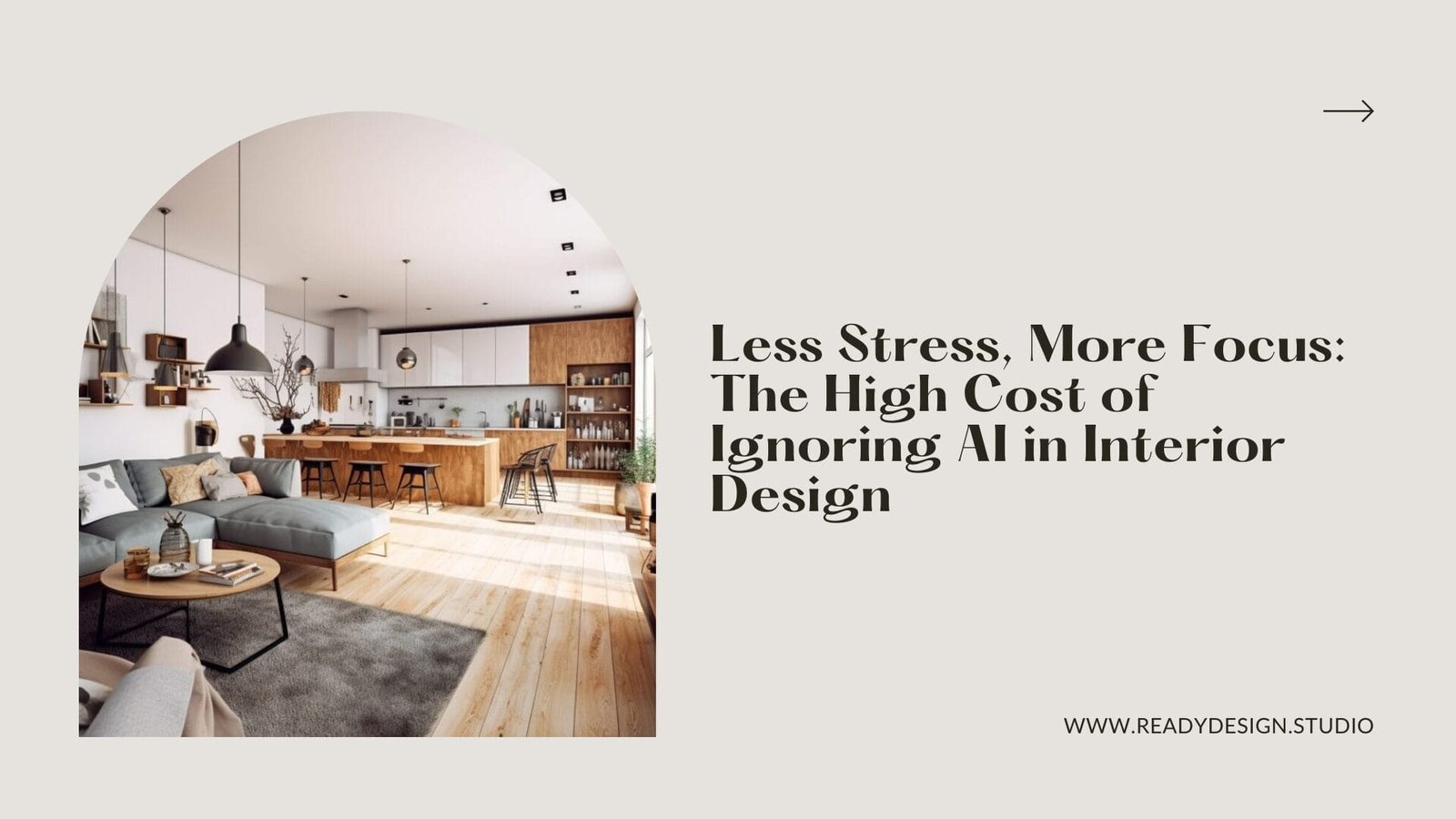Less Stress, More Focus: The Cost of Ignoring AI in Interior Design

Interior design is an industry that demands both creativity and precision. It’s not just about selecting the right materials or creating visually appealing spaces—it’s about managing multiple projects, handling countless revisions, meeting client expectations, and keeping up with tight deadlines. The reality is that most designers spend far less time on creativity than they would like, and far more on repetitive, time-consuming tasks that drain their energy.
Yet, many professionals continue to approach their work the same way they did years ago, believing that long hours and manual processes are the only path to success. The truth is, those who fail to integrate AI into their workflow are not just making their jobs harder—they are actively limiting their growth, profitability, and creative potential.
The Real Cost of an Outdated Workflow
For decades, designers have relied on traditional methods to bring their ideas to life. But these methods come with a cost—one that is measured in lost time, inefficiency, and unnecessary stress.
Manually creating design variations, waiting hours for renders to process, redrawing floor plans with every client request, spending excessive time searching for the right materials, and handling administrative work are all necessary but tedious aspects of the job. These tasks eat into valuable hours that could be spent refining concepts, strengthening client relationships, or exploring innovative design solutions.
More importantly, they limit scalability. A designer who is burdened with repetitive tasks can only take on a finite number of projects before reaching burnout. This means capping their earning potential and restricting opportunities for business growth.
While some may view AI as an optional tool, it is, in reality, a necessary evolution for anyone who wants to stay competitive. The most successful designers are not those who work the hardest, but those who work the smartest. AI enables designers to offload routine tasks, allowing them to focus on the work that truly matters—strategy, creativity, and high-level decision-making.
How AI Transforms the Design Process
The misconception that AI will replace designers is one of the biggest barriers preventing professionals from adopting it. In reality, AI is not a substitute for creativity but an amplifier of it. Designers who integrate AI into their practice are able to work faster, produce higher-quality results, and maintain better control over their projects.
AI-powered tools can generate high-quality renderings in minutes, rather than hours, allowing for rapid iterations and improved client collaboration. They can automate the process of generating floor plan variations, making it easier to explore multiple design concepts without extensive manual labor. AI-driven sourcing tools can instantly suggest furniture, finishes, and materials based on style preferences and budget, cutting research time in half. Even administrative aspects of a design business—such as project management, client communication, and invoicing—can be streamlined through AI, reducing the mental load on designers and freeing up time for creative and strategic tasks.
This is not just about working more efficiently—it is about redefining how interior designers operate. With AI, projects can be delivered faster, clients can receive better service, and designers can take on more work without sacrificing quality or their personal well-being.
The Competitive Advantage of AI in Design
The future of interior design is already being shaped by technology, and those who fail to adapt risk being left behind. While AI will never replace the designer’s ability to conceptualize, innovate, and bring a space to life, it is becoming an industry standard for those who want to maintain a competitive edge.
Designers who leverage AI are able to deliver projects with greater speed and accuracy, leading to higher client satisfaction and repeat business. They can scale their operations without overloading themselves, positioning their businesses for long-term success. Most importantly, they can reclaim the time and mental clarity needed to do what they do best—create.
The choice is simple: continue working within the constraints of outdated methods, or embrace AI and unlock new levels of efficiency, creativity, and professional growth.
For those ready to take the next step, my program ReadyDesign: AI for Interior Designers provides a comprehensive approach to integrating AI seamlessly into the design workflow. This isn’t about replacing creativity—it’s about empowering designers to achieve more with less stress.
The industry is evolving. The only question is: will you evolve with it?
